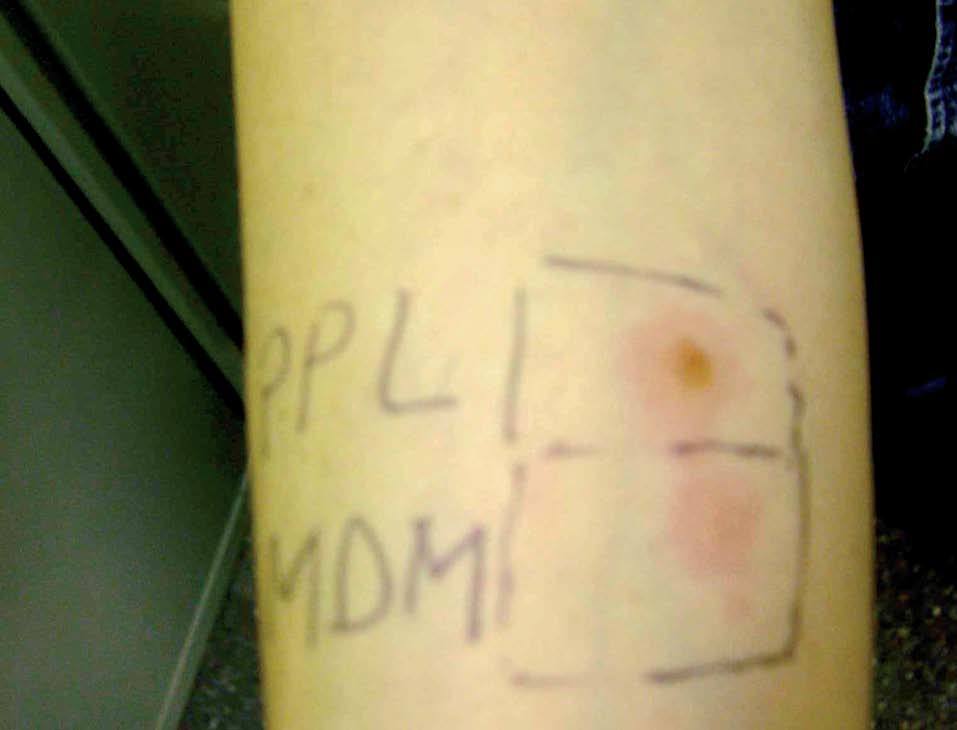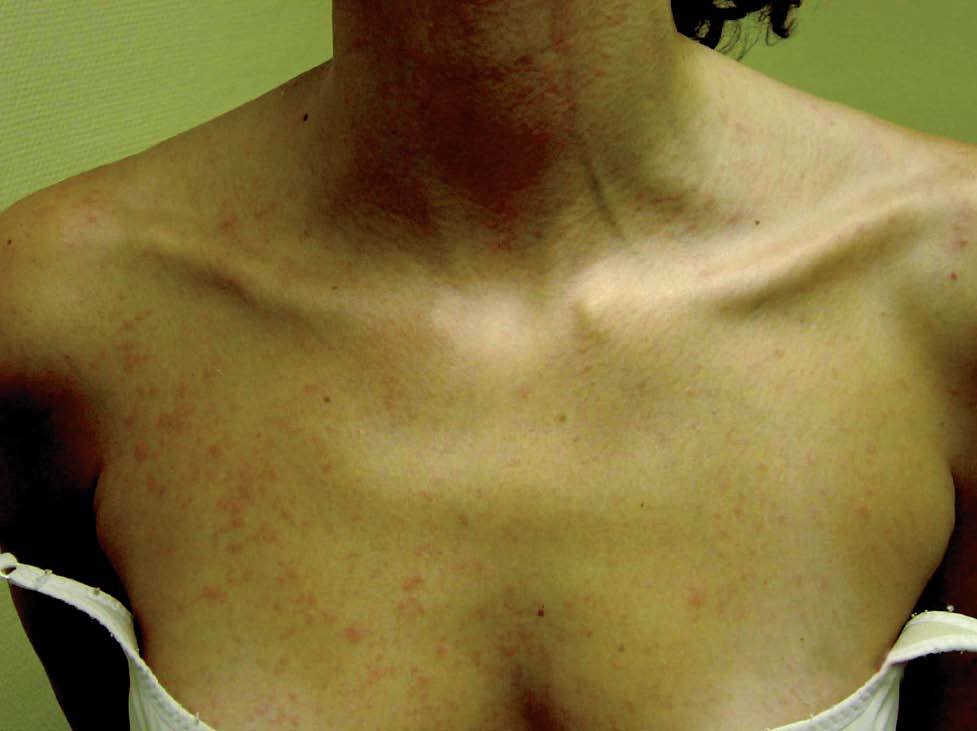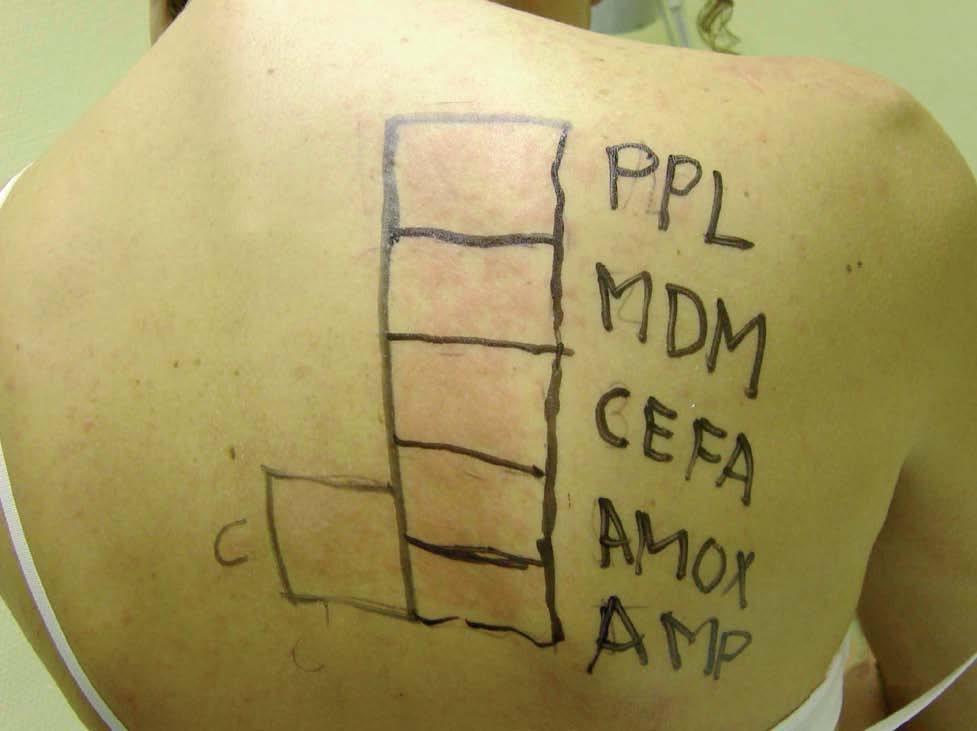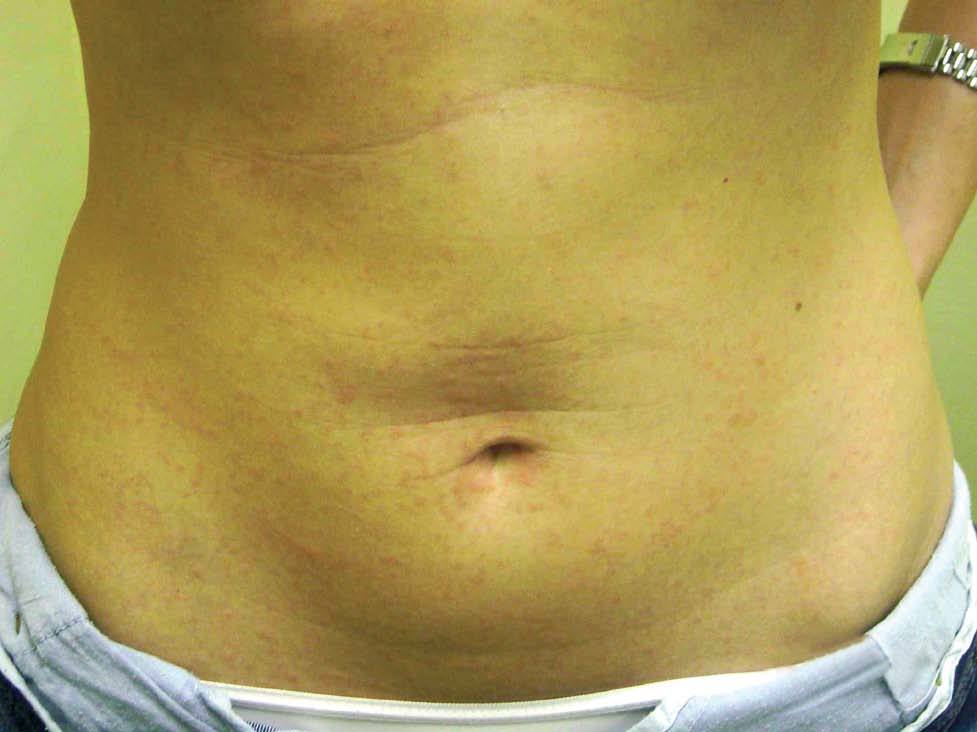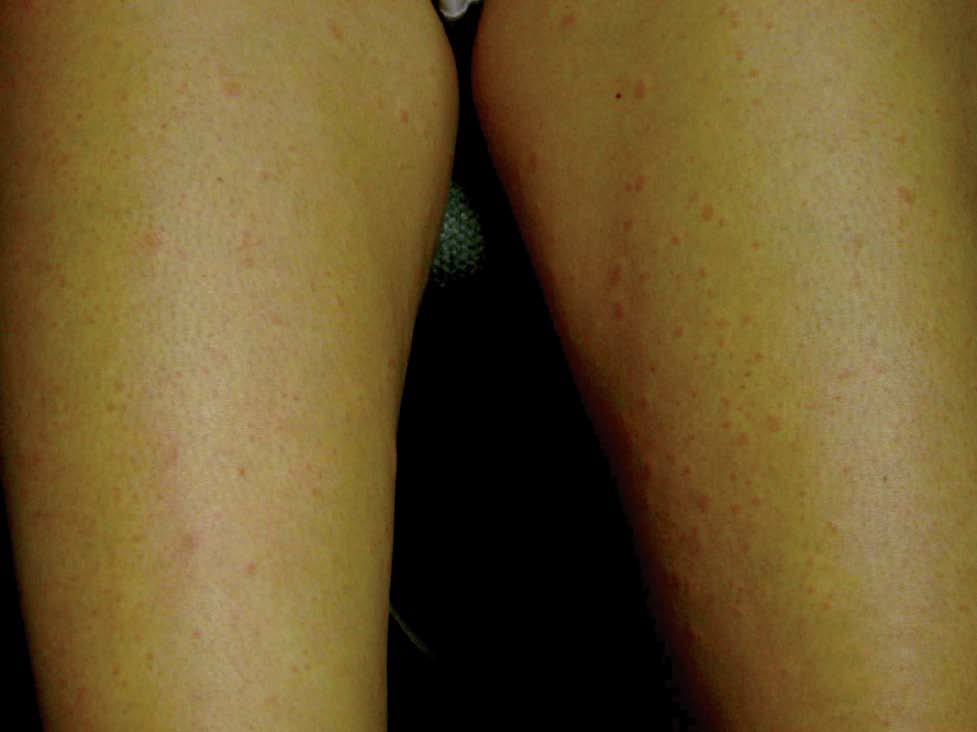The flare up phenomenon has most frequently been described with nickel 1,2. The mechanisms involved in this reaction seem to be heterogeneous and are not completely understood, but different studies suggest that it may be a type-IV (cell-mediated) non-IgE mediated mechanism 3. We have previously reported it with amoxicillin, piroxicam and ampicillin 4-6. Not many cases of flare up to drugs have been reported in the literature 7,8, however we have reported it with different medications.
CASE REPORT
A 31-year-old woman developed an adverse reaction with an antibiotic during her childhood. She does not remember the symptoms or the name of the medication involved. Sulfamides were well tolerated. The patient had grass pollen caused allergic rhinitis and received specific immunotherapy to grass pollen for 3 years, however, she finished it 15 years ago.
We performed the protocol of betalactam hypersensitivity diagnosis from the position paper 9. Prick test with penicillin (100,000 IU/ml), penicilloyl polylysine (PPL), minor determinant mixture (MDM), amoxicillin (200 mg/ml), ampicillin (200 mg/ml) and cephalotin (200 mg/ml), and intradermal test to the same substances diluted in saline were all negative immediately. We performed an oral challenge test with 500 mg of amoxicillin 10,11. Twelve hours later, the intradermal test to PPL and MDM became positive (PPL 10 x 10 mm, MDM 8 x 7 mm) (fig. 1). Patch tests were performed to the same substances (10 % petrolatum) 30 days later. The patch tests were negative after 48 hours, however the patient developed pruritic exanthema on the right arm and also on the thorax (fig. 2).
Figure 1.
Figure 2.
All patch tests were positive after 72 hours (fig. 3) with erythema, vesicles and infiltration and the patient also had exanthema with pruritus on her entire body (figs. 4 and 5). Serum specific IgE to betalactams was not detected by the Pharmacia CAP system.
Figure 3.
Figure 4.
Figure 5.
DISCUSSION
We present one patient with delayed allergic reaction caused by amoxicillin and penicillin, that we all know as Flare up. We suggest that this phenomenon of Flare up occurs by a Type IV mechanism mediated by T-cells without participation of IgE antibodies. The betalactam hypersensitivity mechanism which has usually been described is an IgE mediated reaction, but there are other not very well known mechanisms that are responsible for the delayed reactions.
Flare up reactions consist in the reactivation of previously intradermal test reactions or old positive skin tests after the performance from patch testing or after a systemic challenge.
The flare up phenomenon was described for the first time in the nickel contact eczema in 1981. In 1995, we reported it with amoxicillin and ampicillin skin tests after a systemic challenge with amoxicillin in two different patients. We performed a punch biopsy in one of these patients. It showed a cellular infiltrate in the dermis and epidermis with eosinophils and lymphocytes. Blomberg 12 believes that a few specific T-cells may remain for a long time at previous skin reaction sites, it being the memory-cells that later reactivate these skin tests.
As many other authors, we consider that patch testing and intradermal testing are simple, fast, safe and useful methods in the diagnosis of delayed allergic reactions.




